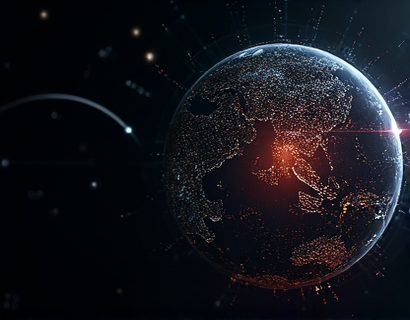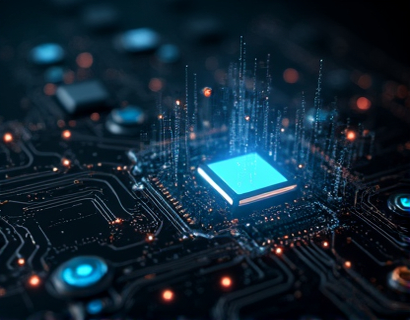AI-Driven Task Management: Master Personal Productivity with Intelligent Organizational Tools
In the fast-paced world of today, managing tasks efficiently and maintaining high levels of productivity are more crucial than ever. The integration of Artificial Intelligence (AI) into personal task management has opened new avenues for individuals to enhance their organizational skills and achieve a more structured, fulfilling life. This article delves into the transformative power of AI in personal task management, exploring how intelligent tools can simplify tasks, enhance focus, and streamline daily routines. For individuals seeking to boost their productivity and organizational abilities, leveraging AI-driven solutions offers a promising path forward.
AI-driven task management tools are designed to understand and adapt to individual work patterns, preferences, and priorities. These tools use advanced algorithms to analyze tasks, set deadlines, and even predict potential bottlenecks, providing users with actionable insights to optimize their workflow. By automating routine tasks and offering intelligent suggestions, AI tools help users save time and mental energy, allowing them to focus on high-value activities that drive personal and professional growth.
Understanding AI in Task Management
At its core, AI in task management involves the use of machine learning and natural language processing to create smart, adaptive systems. These systems can learn from user behavior, adjust to new inputs, and perform tasks that traditionally required human intervention. In the context of personal task management, AI can handle a wide range of functions, from simple reminders to complex project planning.
One of the key benefits of AI-driven task management is its ability to prioritize tasks based on urgency and importance. By analyzing deadlines, task complexity, and user preferences, AI can suggest the optimal order in which to tackle tasks, ensuring that critical activities are addressed first. This prioritization helps users avoid the common pitfall of getting bogged down by less important tasks, thereby maintaining focus and momentum.
Enhancing Focus and Reducing Distractions
Maintaining focus is a significant challenge in today’s distracted world. AI-driven tools can play a pivotal role in minimizing distractions and enhancing concentration. For instance, some AI applications can block distracting websites or notifications during designated work periods, creating a focused work environment. Additionally, AI can suggest optimal work intervals and breaks based on the Pomodoro Technique or other productivity frameworks, helping users maintain a sustainable work rhythm.
Another way AI enhances focus is through personalized notifications and reminders. Instead of generic alerts, AI can tailor notifications to the user’s context, such as reminding them of an upcoming deadline when they are most likely to be available and focused. This context-aware approach ensures that users receive timely and relevant information without being overwhelmed by constant interruptions.
Streamlining Daily Routines
AI-driven task management tools can significantly simplify daily routines by automating repetitive tasks and providing structured planning. For example, AI can integrate with calendars to automatically schedule recurring tasks, such as weekly meetings or monthly reports, based on past patterns. This automation saves users the effort of manually setting reminders and ensures that important tasks are never overlooked.
Moreover, AI can assist in creating and managing to-do lists. By analyzing past behavior and current priorities, AI can suggest tasks to add to the list and even estimate the time required for each task. This feature is particularly useful for individuals who struggle with task estimation, as it helps prevent overcommitting and underdelivering. AI can also categorize tasks into different projects or categories, making it easier to manage multiple responsibilities simultaneously.
Predictive Analytics and Proactive Planning
One of the most powerful aspects of AI in task management is its predictive capabilities. By analyzing historical data and current trends, AI can forecast future tasks and potential challenges. For instance, if a user consistently faces delays in a particular type of project, AI can proactively suggest strategies to mitigate these delays, such as breaking the project into smaller, manageable tasks or allocating more resources.
Predictive analytics also help in identifying patterns in productivity levels, allowing users to adjust their schedules and work habits accordingly. For example, if AI detects that a user is most productive in the morning, it can recommend scheduling critical tasks during this time. Conversely, if productivity dips in the afternoon, AI might suggest lighter tasks or a short break to recharge.
Collaboration and Team Management
AI-driven task management tools are not limited to individual use; they also excel in facilitating collaboration and team management. These tools can centralize project information, assign tasks to team members, and track progress in real-time. AI can ensure that everyone is on the same page by providing clear, up-to-date insights into project statuses and individual contributions.
Moreover, AI can enhance team communication by suggesting optimal times for meetings based on team members’ availability and time zones. It can also analyze communication patterns to identify potential bottlenecks and propose improvements. For instance, if AI detects that certain team members are frequently out of sync, it might recommend more frequent check-ins or the use of collaborative tools to keep everyone aligned.
Customization and Personalization
One of the greatest strengths of AI in task management is its ability to adapt to individual needs and preferences. Each user’s experience can be tailored through customizable interfaces, task categorization, and notification settings. AI learns from user interactions and feedback, continuously refining its suggestions and recommendations to better align with the user’s workflow and goals.
For example, a user who prefers visual representations of their tasks can enable a Kanban board view, while another user might prefer a list-based interface. AI can also adjust the level of detail in task descriptions and reminders based on the user’s comfort level, ensuring that the tool remains user-friendly and effective.
Overcoming Common Challenges
While AI-driven task management offers numerous benefits, it is essential to address some common challenges to fully leverage its potential. One challenge is the initial setup and integration with existing tools and systems. Users should start by selecting an AI tool that integrates seamlessly with their current workflow, minimizing disruption and maximizing efficiency.
Another challenge is ensuring data privacy and security. Users should choose reputable AI tools that prioritize data protection and comply with relevant regulations. Reading reviews, checking user testimonials, and understanding the tool’s privacy policy can help mitigate these concerns.
Additionally, some users might be skeptical about relying on AI for critical tasks. To build trust, it is important to start with simple tasks and gradually increase reliance on AI. Monitoring the tool’s performance and providing feedback can help refine its accuracy and reliability over time.
Practical Strategies for Effective AI Integration
To maximize the benefits of AI-driven task management, users can adopt several practical strategies. First, set clear goals and priorities. Define what success looks like for your tasks and projects, and ensure that AI tools are aligned with these objectives. This clarity will help AI provide more relevant and actionable insights.
Second, establish a consistent routine for reviewing and updating tasks. Regularly checking in with the AI tool to adjust priorities, add new tasks, and remove completed ones ensures that the system remains accurate and useful. This routine also helps in identifying any areas where the AI might need fine-tuning.
Third, leverage AI for time blocking. By scheduling specific blocks of time for different types of tasks, users can maintain a balanced and productive day. AI can assist in creating these blocks based on task complexity and personal energy levels, optimizing the use of time.
Fourth, use AI for reflection and analysis. At the end of each week or month, review the tasks completed, time spent, and outcomes achieved. AI can provide detailed reports and insights, helping users identify patterns, areas for improvement, and successful strategies to replicate.
Conclusion
AI-driven task management tools offer a powerful way to enhance personal productivity and organizational skills. By automating routine tasks, providing intelligent suggestions, and offering predictive insights, these tools help individuals streamline their daily routines and achieve their goals more efficiently. While there are challenges to consider, the benefits of integrating AI into task management are substantial. By adopting the right strategies and choosing the right tools, users can transform their approach to productivity and create a more structured, fulfilling life.











































